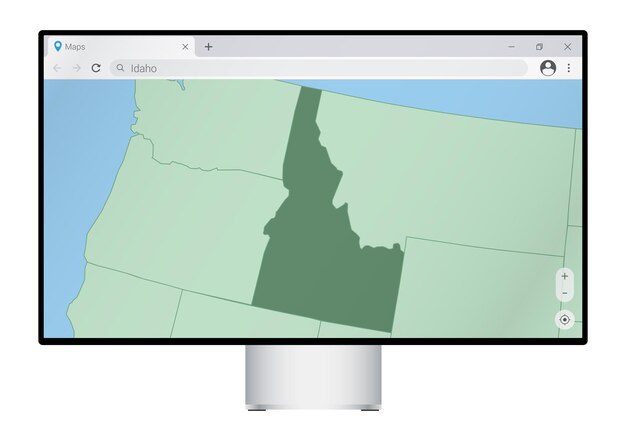Analyzing Gerrymandering’s Impact on US Elections: Solutions for Fairness

Gerrymandering, the strategic drawing of electoral district boundaries, significantly impacts the fairness of US elections by potentially diluting the voting power of certain groups and creating skewed electoral outcomes; potential solutions include independent redistricting commissions and stricter legal standards.
The practice of gerrymandering has long been a contentious issue in American politics, raising serious questions about the integrity and fairness of elections. Analyzing the impact of gerrymandering on the fairness of US elections: what are the potential solutions? is crucial for understanding how this manipulation affects democratic representation and what steps can be taken to mitigate its negative effects.
Understanding Gerrymandering: A Threat to Fair Elections
Gerrymandering, named after Massachusetts Governor Elbridge Gerry, who in 1812 approved a district that resembled a salamander, involves drawing electoral district boundaries to favor one political party or group over another. This practice can lead to situations where a minority of voters can elect a majority of representatives, undermining the principle of equal representation.
How Gerrymandering Works
At its core, gerrymandering is about manipulating district lines to create an advantage. There are two primary techniques used:
- Cracking: This involves spreading voters of a particular party across multiple districts, diluting their voting power in each.
- Packing: This focuses on concentrating voters of a particular party into a single district, thereby reducing their influence in surrounding districts.
These techniques can result in districts that look bizarre and defy logical geographic boundaries, all in the service of partisan advantage.
The Impact on Voters
The consequences of gerrymandering extend beyond partisan politics. It affects the everyday lives of voters by reducing their ability to elect representatives who truly reflect their views and interests. This can lead to voter apathy and disengagement, as people feel their votes don’t matter.

Furthermore, gerrymandering can create safe seats for incumbents, reducing competition and accountability. Representatives in these districts may be less responsive to the needs of their constituents, knowing that their reelection is virtually guaranteed.
In conclusion, gerrymandering significantly undermines the fairness of elections by distorting representation and reducing voter influence. Understanding its mechanics and impacts is essential for addressing this challenge.
Historical Context and Legal Challenges
Gerrymandering is not a new phenomenon in American politics. It has been practiced since the early days of the Republic, with both major parties engaging in the tactic to secure electoral advantages. However, the rise of sophisticated data analysis and mapping technologies has made gerrymandering more precise and effective, raising serious concerns about its impact on democratic outcomes.
Early Instances of Gerrymandering
The term “gerrymandering” itself has a rich history. As mentioned earlier, it originated in 1812 when Massachusetts Governor Elbridge Gerry approved a district that critics said resembled a salamander. This early example highlights how the manipulation of district lines has been a long-standing feature of American elections.
Throughout the 19th and 20th centuries, gerrymandering continued to be used by both Democrats and Republicans to consolidate power and influence electoral outcomes. However, it was not until the latter half of the 20th century that legal challenges to gerrymandering began to gain traction.
Landmark Supreme Court Cases
Several landmark Supreme Court cases have addressed the issue of gerrymandering, though with limited success.
- Baker v. Carr (1962): This case established that federal courts could hear cases challenging the drawing of state legislative districts, opening the door for legal challenges to gerrymandering.
- Reynolds v. Sims (1964): This case established the principle of “one person, one vote,” requiring that state legislative districts be roughly equal in population.
Despite these rulings, the Supreme Court has struggled to establish clear and enforceable standards for identifying and addressing partisan gerrymandering. In 2019, the Court ruled in *Rucho v. Common Cause* that partisan gerrymandering claims were non-justiciable, meaning that federal courts could not hear them.
The Current Legal Landscape
As a result of the Supreme Court’s decision in *Rucho v. Common Cause*, legal challenges to gerrymandering have largely shifted to the state level. Some states have adopted independent redistricting commissions or other reforms to reduce partisan influence in the drawing of district lines.
In conclusion, the historical context and legal challenges surrounding gerrymandering illustrate the complexities of addressing this issue. While legal avenues for challenging partisan gerrymandering have been limited, efforts to reform the redistricting process at the state level offer some hope for mitigating its negative impacts.
The Role of Technology in Modern Gerrymandering
The advent of advanced technology has revolutionized the practice of gerrymandering, making it more precise and effective than ever before. With sophisticated data analysis and mapping tools, political parties can now draw district lines with surgical precision, maximizing their electoral advantage.
Data Analysis and Voter Demographics
Modern gerrymandering relies heavily on data analysis to understand voter demographics and patterns. Political parties use sophisticated software to analyze voter registration data, voting histories, and other demographic information to identify concentrations of voters who are likely to support their candidates.
This data is then used to draw district lines that either concentrate opposing voters into a single district (packing) or spread them across multiple districts to dilute their voting power (cracking). The goal is to create districts that are as safe as possible for the party in control of the redistricting process.
Geographic Information Systems (GIS) and mapping software play a crucial role in this process. These tools allow political parties to visualize voter data and experiment with different district boundaries to achieve their desired electoral outcomes.
Simulating Electoral Outcomes
One of the most powerful capabilities of modern gerrymandering technology is the ability to simulate the electoral outcomes of different redistricting plans. By inputting voter data and running simulations, political parties can predict with a high degree of accuracy how each district will vote under a given map.
This allows them to fine-tune their redistricting plans to maximize their overall seat share in the legislature or Congress. The use of simulation technology makes gerrymandering a highly strategic and data-driven process.

In conclusion, technology has transformed the practice of gerrymandering, making it more precise, effective, and data-driven. The ability to analyze voter data, simulate electoral outcomes, and draw district lines with surgical precision has raised serious concerns about the fairness and representativeness of American elections.
Potential Solutions: Independent Redistricting Commissions
One of the most widely discussed solutions to gerrymandering is the creation of independent redistricting commissions. These commissions are designed to remove partisan influence from the redistricting process, entrusting the task to non-partisan experts or citizen volunteers.
How Independent Commissions Work
Independent redistricting commissions typically consist of members who are not elected officials or party leaders. They may be appointed by judges, universities, or other non-partisan institutions. The goal is to create a body that is free from political pressure and motivated by the public interest.
These commissions are usually tasked with drawing district lines according to a set of objective criteria, such as compactness, contiguity, and respect for existing political subdivisions. They may also be required to consider factors such as community of interest and minority representation.
Examples of Successful Commissions
Several states have adopted independent redistricting commissions with varying degrees of success.
- California: California’s Citizens Redistricting Commission has been praised for its transparency and non-partisanship. The commission is composed of 14 members selected through a rigorous application process.
- Arizona: Arizona’s Independent Redistricting Commission has also been successful in drawing more competitive and representative districts. However, the commission has faced legal challenges from political parties seeking to influence the process.
These examples demonstrate that independent redistricting commissions can be an effective way to reduce partisan gerrymandering and promote fairer elections.
Critics argue that independent commissions may not be entirely free from political influence, as the selection of commissioners can still be subject to partisan considerations. However, studies have shown that independent commissions generally produce more competitive and representative districts than those drawn by partisan legislatures.
In conclusion, independent redistricting commissions offer a promising solution to the problem of gerrymandering. By removing partisan influence from the redistricting process and entrusting the task to non-partisan experts, these commissions can promote fairer elections and more representative government.
Alternative Voting Systems and Their Impact
Beyond redistricting reforms, alternative voting systems can also play a role in mitigating the effects of gerrymandering. These systems aim to provide more accurate representation of voter preferences and reduce the potential for partisan manipulation.
Ranked Choice Voting
Ranked choice voting (RCV), also known as instant runoff voting, allows voters to rank candidates in order of preference. If no candidate receives a majority of first-choice votes, the candidate with the fewest votes is eliminated, and their votes are redistributed to the voters’ next choice.
This process continues until a candidate receives a majority of the votes. RCV can lead to more moderate outcomes and reduce the incentive for negative campaigning, as candidates need to appeal to a broader range of voters to secure second- and third-choice votes.
Proportional Representation
Proportional representation (PR) systems allocate seats in a legislature proportionally to the number of votes that each party receives. This ensures that smaller parties have a chance to win representation, and that the overall composition of the legislature reflects the preferences of the electorate.
There are several different types of PR systems, including party-list PR and mixed-member proportional representation. In party-list PR, voters vote for a party, and seats are allocated to parties based on their overall vote share. In mixed-member proportional representation, voters vote for both a local candidate and a party, and seats are allocated to ensure overall proportionality.
Critics argue that alternative voting systems can be more complicated for voters to understand and may lead to unintended consequences. However, these systems can also promote more accurate representation and reduce the potential for partisan manipulation.
In conclusion, alternative voting systems offer another avenue for addressing the problems caused by gerrymandering. By providing more accurate representation of voter preferences and reducing the potential for partisan manipulation, these systems can help to promote fairer and more representative elections.
The Path Forward: A Multi-Faceted Approach
Addressing the issue of gerrymandering requires a comprehensive, multi-faceted approach that combines legal challenges, redistricting reforms, and alternative voting systems. No single solution is likely to fully eliminate the problem, but a combination of strategies can help to mitigate its negative effects and promote fairer elections.
Legal Challenges and Judicial Interpretation
Despite the Supreme Court’s decision in *Rucho v. Common Cause*, legal challenges to gerrymandering can still be effective at the state level. State courts may be more willing to hear partisan gerrymandering claims under state constitutional provisions.
Furthermore, legal advocacy groups can continue to push for clearer and more enforceable standards for identifying and addressing partisan gerrymandering. This may involve developing new legal theories or presenting evidence that demonstrates the discriminatory effects of gerrymandering on particular groups of voters.
Redistricting Reform and Citizen Engagement
Redistricting reform is another essential component of any comprehensive approach to gerrymandering. This may involve creating independent redistricting commissions, adopting objective criteria for drawing district lines, and promoting greater transparency in the redistricting process.
Citizen engagement is also crucial. Voters need to be informed about the issue of gerrymandering and empowered to participate in the redistricting process. This may involve organizing public hearings, educating voters about their rights, and advocating for redistricting reforms at the state and local levels.
Ultimately, the goal is to create a system where district lines are drawn fairly and impartially, and where every voter has an equal opportunity to elect representatives who truly reflect their views and interests.
| Key Point | Brief Description |
|---|---|
| 🗳️ Gerrymandering | Strategic drawing of district lines to favor one party, undermining fair representation. |
| ⚖️ Legal Challenges | Landmark cases like Baker v. Carr opened the door for challenges, but success remains limited. |
| 🤝 Independent Commissions | Non-partisan bodies drawing maps based on objective criteria to reduce partisan influence. |
| ✔️ Alternative Systems | Ranked choice voting and proportional representation offer more accurate voter preference representation. |
FAQ
▼
Gerrymandering involves manipulating electoral district boundaries to give an unfair advantage to one political party over another, diluting or amplifying voting power.
▼
It undermines fair representation by skewing election outcomes, potentially allowing a minority of voters to control the outcome and diminishing voter confidence.
▼
These are non-partisan bodies designed to draw electoral maps objectively, removing partisan influence and aiming for fair representation based on clear criteria.
▼
Voters rank candidates by preference. If no candidate wins a majority, the least popular is eliminated and their votes redistributed until a majority winner emerges.
▼
Yes, though federal courts have limited power, state courts can offer avenues to challenge maps under state constitutions, potentially leading to redrawn districts.
Conclusion
Analyzing the impact of gerrymandering reveals a significant threat to the fairness of US elections. While the problem is deeply entrenched, solutions such as independent redistricting commissions, alternative voting systems, and continued legal challenges offer a path towards more equitable representation and a stronger democracy.





